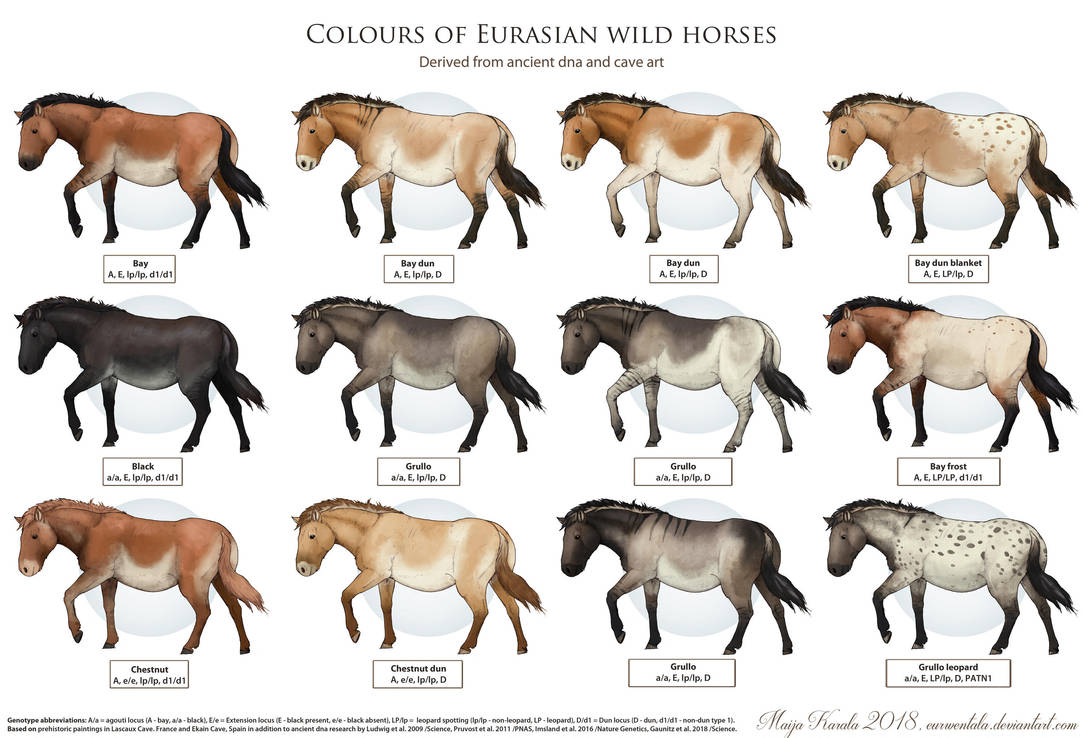 |
| © Maija Karala |
I especially like how the leopard spotted pattern has been illustrated, that way it looks really credible for a wildtype animal.
I only have two remarks. As far as I know, the black phenotype suppresses the expression of pangare/countershading, so the black horse should be wholly black, and the chestnut allele e is, as far as the literature that I know, is a mutation in domestic horses that did not show up before the Holocene.
Literature
Ludwig et al. 2009: Coat color variation at the beginning of horse domestication
Sandovall-Castellanos et al. 2017: Coat colour adaption of post-glacial horses to increasing forest vegetation. 2017.

Nicely done, no doubt influenced by your previous work! Apart from wolves, what other large, wild mammal would have a variety of different colours within the same breeding group? I'm not saying that I think all these colours above would be in the same group in the same geographic area in the same point in time but from what I have read before it seems herds would have had a few of the above colours at the one time.
ReplyDeleteThis comment has been removed by the author.
ReplyDelete
ReplyDeleteAnd yes, black horses should be fully black.
Genetic studies prove that this coat color was present in some wild horses, plus it can be seen in some Lascaux cave paintings.
Regarding the chestnut, I know that one chestnut allele (MC1R) was found in a sample from Romania.
Here it is the reference:
https://www.ncbi.nlm.nih.gov/pmc/articles/PMC3219153/
Still not sure how it was expressed on the horse.~
This comment has been removed by the author.
ReplyDeleteAlso not sure, why he/she thinks that bay pangare horses shouldn´t have mealy mouths.
ReplyDeleteAnyway and regarding again the chestnut, it´s possible that horse didn´t even had a chestnut coat color, if it was heterozygous in the MC1R locus and homozygous in the ASIP locus for the black allele, it exhibited a black coat color.
Probably and once more wild horses are studied we´ll find out more about this subject.